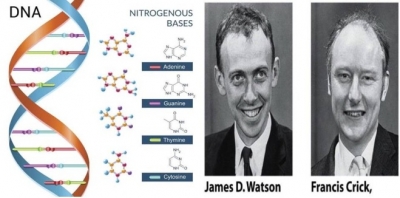
DNA is short for ‘deoxyribonucleic acid’. It is a complex molecule that holds the genetic code (or blueprint) of all organisms including humans, animals and plants. DNA determines, among other things, how tall or short you are, the colour of your skin, or if you have brown eyes or blue.
It is present in each cell of the organism and is inherited from parents to children. The theory of genetic inheritance was first proposed by Gregor Mendel in 1865. He suggested that information was passed on in discrete units from parent to child and that traits were not ‘blended’ together. His findings formed the basis of the science of genetics.
DNA was discovered accidentally in 1869 by Friedrich Miescher who was studying the composition of lymphoid cells (white blood cells). He isolated a new molecule he called nuclein from a cell nucleus. He was the first to define DNA as a distinct entity.
After much research, in 1953 James Watson and Francis Crick presented the double-helix structure of DNA, consisting of two DNA strands wound around each other. It was shown that each of the inter-twined strands of DNA consisted of a chain of chemical groups called nucleotides.
Nucleotides are made up of four chemical bases. The order of these bases determines the information available for building and maintaining an organism.
The discovery of the structure of DNA transformed science, medicine and agriculture. It revolutionized the investigation of disease and the identification of pathogens. It is also a major component of forensic science where evidence based on DNA findings helps solve many cases.
When Watson and Crick discovered the structure of DNA, they had stumbled upon the secret of all life on earth!
Picture Credit : Google




